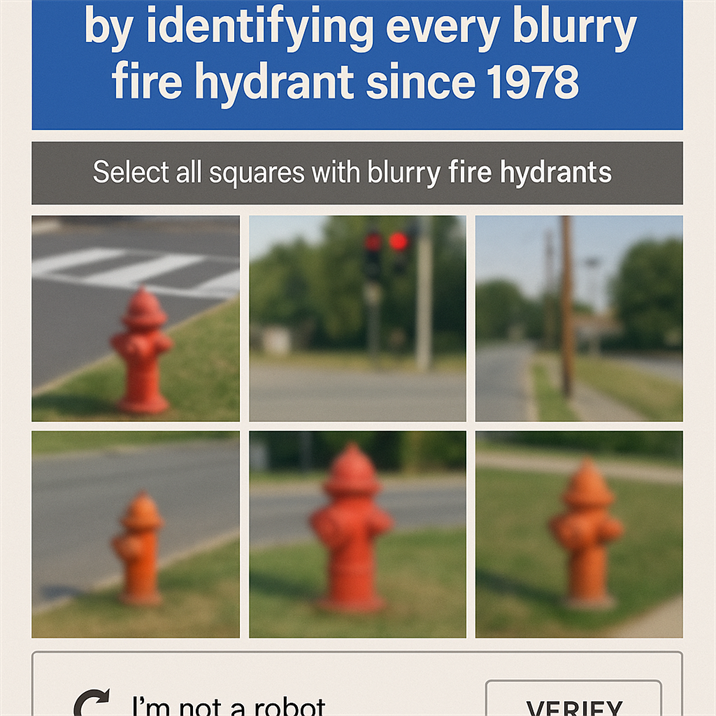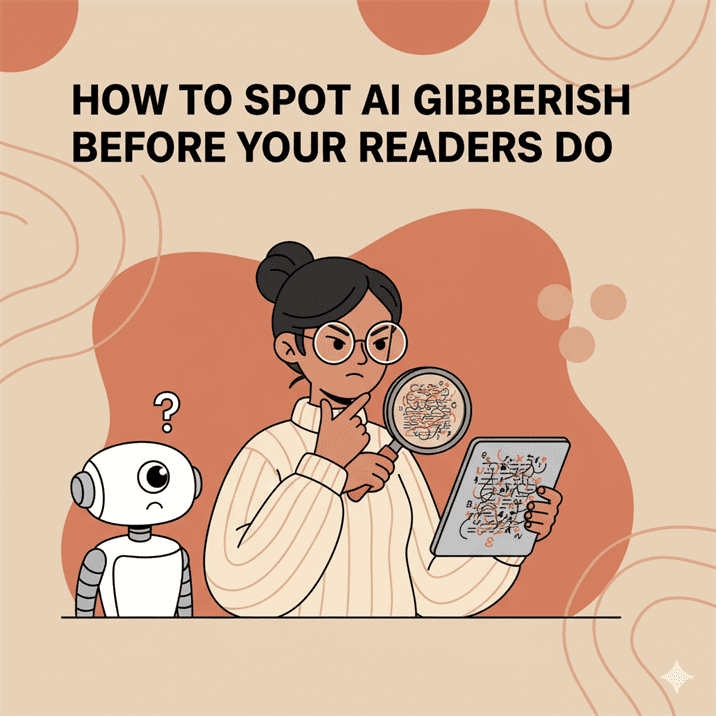How to train AI to match your brand voice (Without sounding like a robot)

Here’s the thing: your brand voice is like your favourite sweater. Cosy. Recognizable. Maybe a little worn in the elbows, but in a good way.
Now imagine lending that sweater to a robot.
Without training, the robot will wear it inside out, with mismatched trousers and tell your audience, “Greetings, human. I am here to synergise engagement.”
AI can absolutely speak your language if you give it a fighting chance.
With the right prep, your brand voice stays intact, your readers stay engaged, and nobody ends up feeling like they’re trapped in a corporate brochure from 2007.
By the end of this little adventure, you’ll be able to feed AI your style so it doesn’t just imitate you, it channels you.
Think ghostwriter, but without the ghost or the awkward coffee meetings.
Identifying your brand voice (Tone, vocabulary, pacing)
First, we have to figure out what your voice actually is. (And yes, “vibes” count as a valid descriptor, but we’re going to get more specific.)
- Tone: Are you casual and chatty? Professional and crisp? That friend who says, “Long story short” and then tells a 20 minute story?
- Vocabulary: Do you say “utilise” or “use”? “Folks” or “stakeholders”? “LOL” or the full “laughing out loud” (in which case… why?).
- Pacing: Short snappy sentences? Or are you the kind of writer who, much like a certain Victorian novelist I could name, can’t resist a parenthetical tangent before returning to the main clause?
Tip: Go back through your last 10–15 pieces of content and highlight words or phrases you tend to repeat. Congratulations, that’s part of your voice DNA.
Collecting voice training samples for AI
If AI is going to speak like you, it needs to hear you first. We’re basically creating a vocal mixtape here.
- Gather 5–10 examples of content that feels exactly like you. (Blog posts, newsletters, Instagram captions. Anything where your personality shines.)
- Make sure it’s diverse enough to cover different contexts (serious announcements, playful updates, the occasional humblebrag).
- Label them for AI with descriptors: “This is my casual-but-encouraging tone,” “This is my persuasive-you-need-this tone,” etc.
Pro tip: Bad samples teach bad habits. Don’t throw in that rushed blog post you cranked out at 2 a.m. unless your brand voice is “overtired puppy with WiFi.”
Structuring prompts to reflect tone and style
Here’s where the magic happens, and by “magic,” I mean “deeply nerdy prompt engineering.”
Instead of:
Write a blog post about productivity.
Try:
Write a conversational, humorous blog post about productivity, using short punchy sentences, occasional self-deprecating humour, and pop culture references. Avoid formal phrasing and long, academic explanations.
The difference? The second one tells AI how to wear your sweater correctly.
Extra flair: Give AI a persona. “Write as if you’re a slightly overcaffeinated creative director who loves analogies and dislikes buzzwords.”
Using example-based prompting and “do/don’t” lists
AI loves examples almost as much as I love baked goods. Show it what’s “you” and what’s not you.
Do:
- Break the fourth wall occasionally.
- Use playful metaphors.
- Mix sincerity with humour.
Don’t:
- Use clichés like “unprecedented times” (unless it’s 2020 again, in which case, urgh).
- Sound like a corporate press release.
- Over-explain basic concepts your audience already knows.
It’s like teaching a friend your texting style, eventually, they just get it.
Testing output for consistency
Once AI writes something in your “voice,” don’t just nod and post it. Test it.
- Does it sound like you, or like a parody of you?
- Would your audience believe you actually wrote it?
- If you read it aloud, does it feel natural, or do you trip over robot-sounding phrasing?
If something’s off, tweak your prompt, add more examples, or tell AI directly what to change. (Yes, you can scold it gently, “That’s too stiff, make it warmer.” It doesn’t have feelings. Yet.)
Maintaining voice over time with prompt libraries or custom GPTs
Training AI once is great. Training it once and saving that setup? There’s nothing better.
- Prompt libraries: Keep a doc with your best voice templates. Whenever you need AI to write something, copy-paste from the doc instead of reinventing the wheel.
- Custom GPTs: If your platform allows, create a custom AI with your style baked in. It’s like having a personal intern who actually listens.
Over time, your AI gets better at sounding like you so it can deliver consistency without the “Who wrote this?” panic.
Bad AI vs. Good AI: The “Brand Voice Glow-Up”
Here’s an example for a little show and tell:
Scenario: You run a fun, slightly cheeky wellness brand. You want a blog post intro about the benefits of drinking more water.
| Bad AI | Good AI |
| Hydration is essential for human health. Water supports numerous bodily functions and is necessary for life. Failure to consume adequate amounts may lead to dehydration. | If your water bottle hasn’t left your desk since last Tuesday, this is your sign to give it a rinse and refill. Hydration is basically the magic trick your body does for free for better skin, better mood, and fewer “Why am I dizzy?” moments. |
| What went wrong? Formal, bland, and sounds like the start of a high school science textbook. Zero personality. | Why it works: Conversational, slightly playful, and specific to the audience. Keeps facts intact but dresses them in your brand’s favourite trainers. |
AI as your voice amplifier, not your voice replacement
Here’s the punchline: AI shouldn’t replace you, it should make you sound like the best version of yourself, even on a bad hair day.
With the right examples, prompts, and a little patience, you can teach AI to write like you without losing that human spark.
Think of it as a duet. You’re just letting the robot harmonize in the background while you take the lead.
And if all else fails, remember you can always delete its work and write your own. (The robots don’t hold grudges… probably.)
FAQs: AI brand voice edition
Can I train AI once and be done?
Not if you want consistent results. Think of it like a new barista learning your coffee order. You’ll get it faster over time, but you still have to remind them, “No foam, extra cinnamon” every so often.
What if my brand voice changes?
Update your samples and prompts. AI can adapt quickly, but only if you give it fresh input.
How many samples do I really need?
At least 5–10 solid examples. More if your tone shifts a lot depending on context.
Is it possible for AI to sound too much like me?
If it starts using inside jokes you didn’t train it on, you might have accidentally created your digital twin. Proceed with amusement (and mild suspicion).
Can AI ever replace my writing completely?
Technically yes, but why would you? You’re the secret sauce. AI is just the sous-chef.



